If someone visits the Buda Castle years later, they will see many novelties in the vicinity of the Buda Castle, which immediately catch their eye. The well-kept plant beds of Szent György Square, which show a different picture every month, the reconstructed facade of the south connecting palace wing, which includes the rebuilt St. Stephen's Hall, the renovated Mátyás Fountain, the Riding Hall, and the Guard House are hiding interesting stories. And for the sharp-eyed visitor, the latter building proclaims its original function from afar: the 12 special statues on top, the trophies indicate a military purpose.
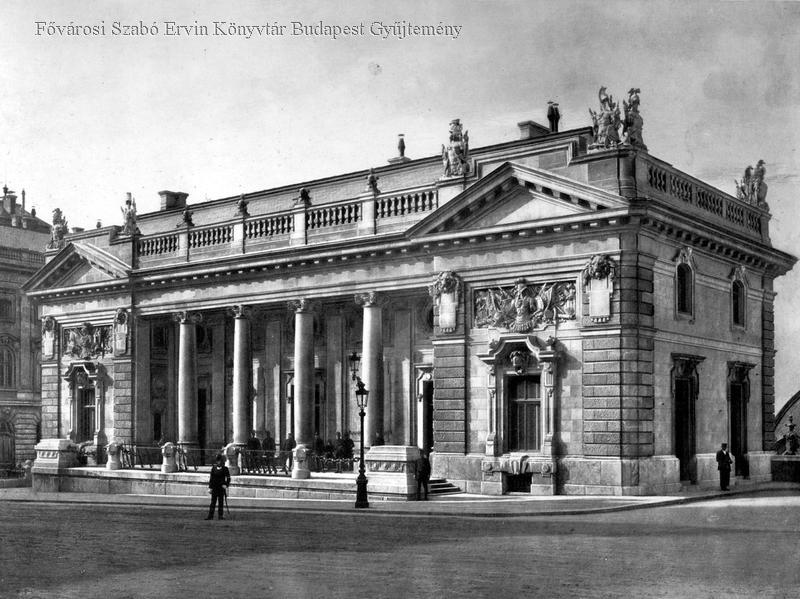
The building of the Guard House proclaims its original purpose from afar: the 12 trophy statues placed on top of it evoke an ancient Roman custom (Photo: FSZEK Budapest Collection)
The Guard House, built between 1901 and 1903, designed by Alajos Hauszmann, was originally the guarding and resting place of the Hungarian Royal Guard, established in 1904 for the protection of the palace and the ruler, as well as for spectacular changing of guards. Originally founded in 1760 by Maria Theresa, the Hungarian Royal Guard was established alongside the then-existing Imperial Royal First Arciere Guard, recognising the Hungarian military loyalty and courage shown in the War of Succession. Like all the other guards, the Hungarian guardsmen also served as a veritable elite team: many of its members were multilingual, highly trained soldiers who had to meet strict expectations, and they required permission to marry.
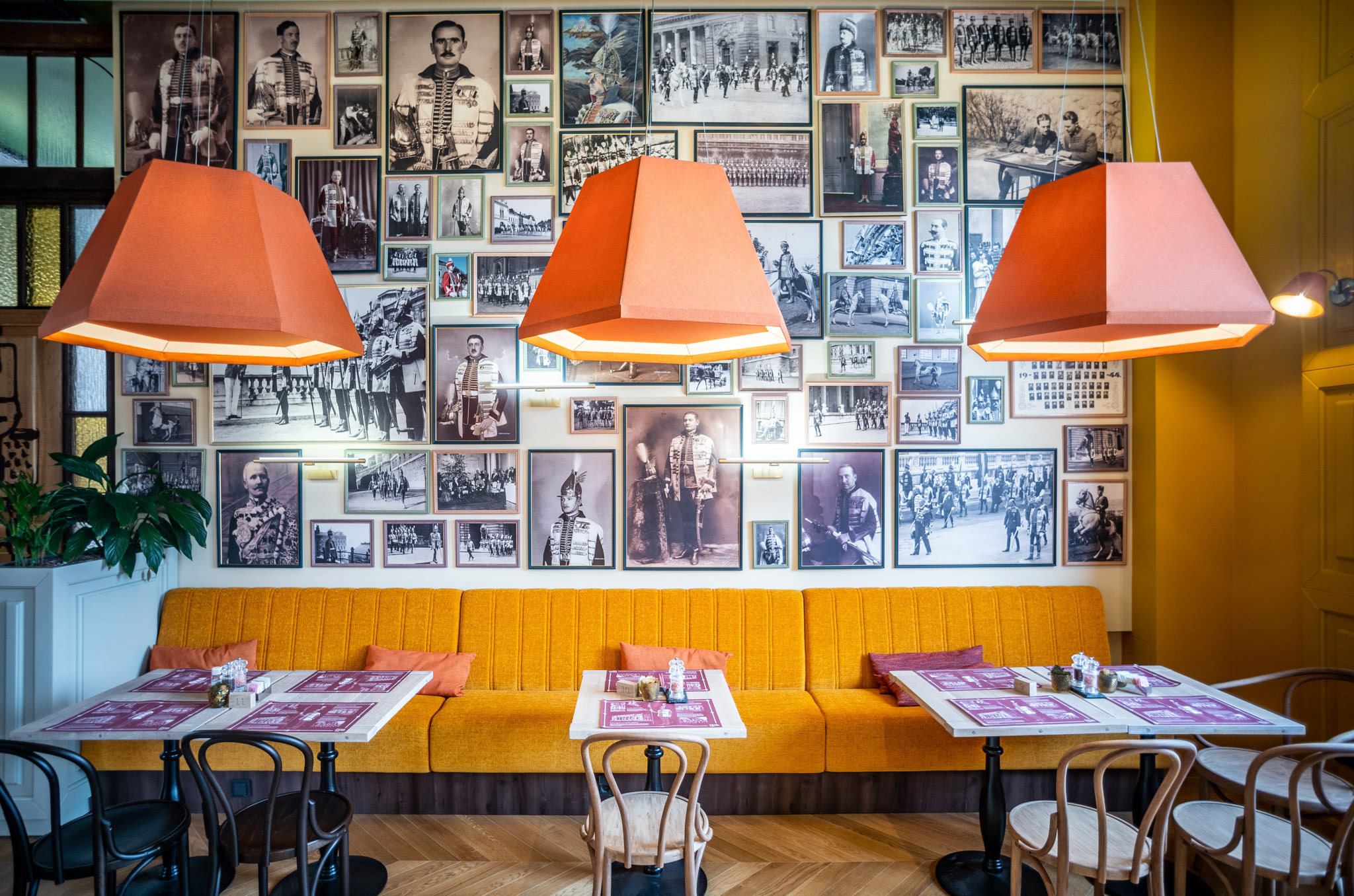
Members of the former aristocratic guard look at the visitors from the walls of the café (Photo: Balázs Both/pestbuda.hu)
World War II left significant but not fatal wounds on the imposing building. However, instead of restoring it, the Guard House was dismantled in 1970. The building was reborn by 2020 under the National Hauszmann Program, following the original plans, with the same external facade as the original, but in line with the technological challenges of the 21st century.
The café opened in May in the rebuilt Guard House, and the long-needed exhibition on the first floor shows the centuries-old history and presence of the Hungarian guards.
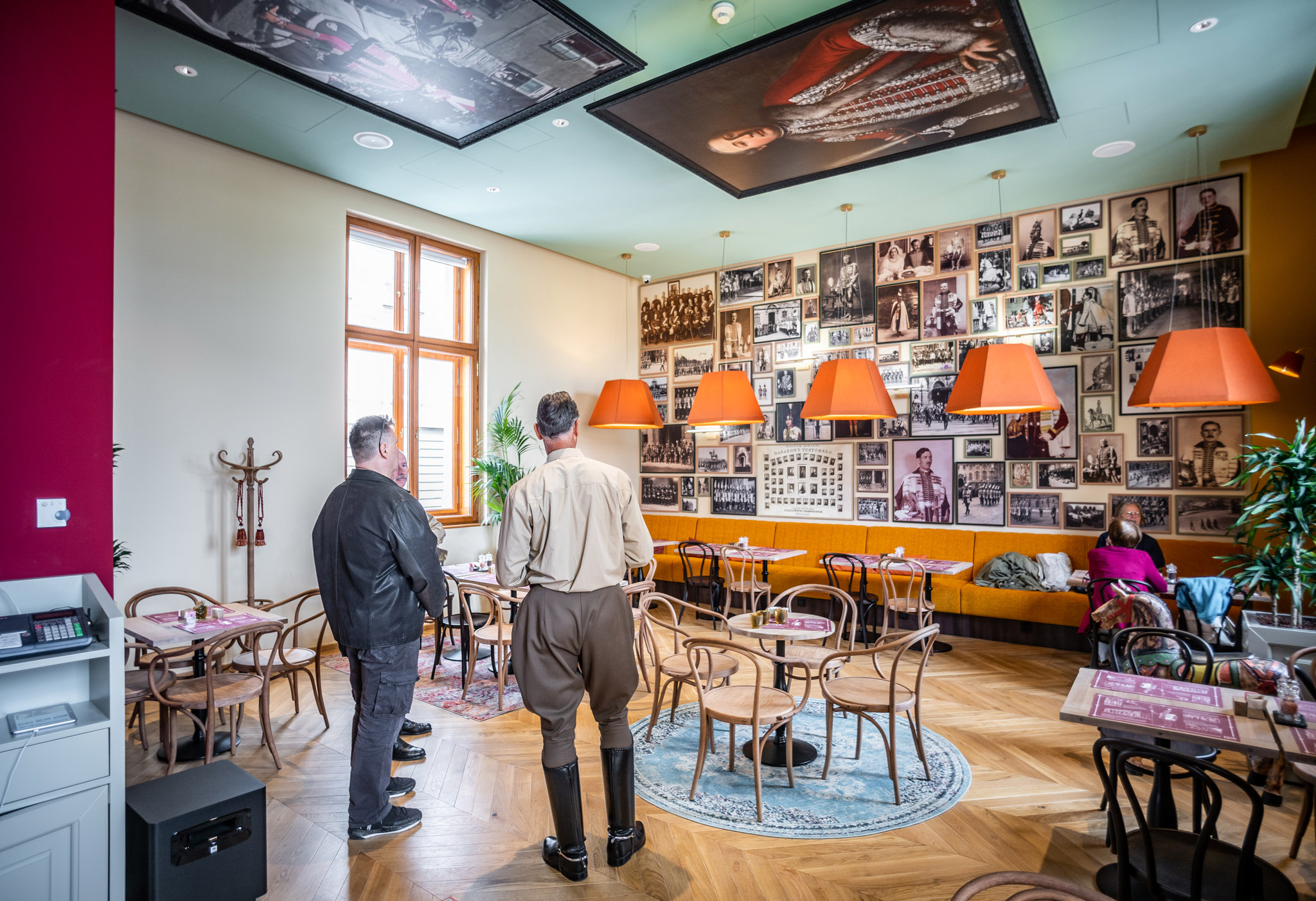
Archive photos evoke interesting stories for many (Photo: Balázs Both/pestbuda.hu)
Entering the 578-square-metre building, visitors are greeted by a breezy, bright space: archive photos covering the pleasant-coloured walls, herringbone parquet, Thonet chairs evoking the heyday of café culture, and old objects placed between copper-glass partition panels are elegant, yet they evoke a homely feeling in the visitor. The interior designed by Ildikó Hergenrőder is an interesting mix of past and present and, as it turned out, also refers to the former function of the building.
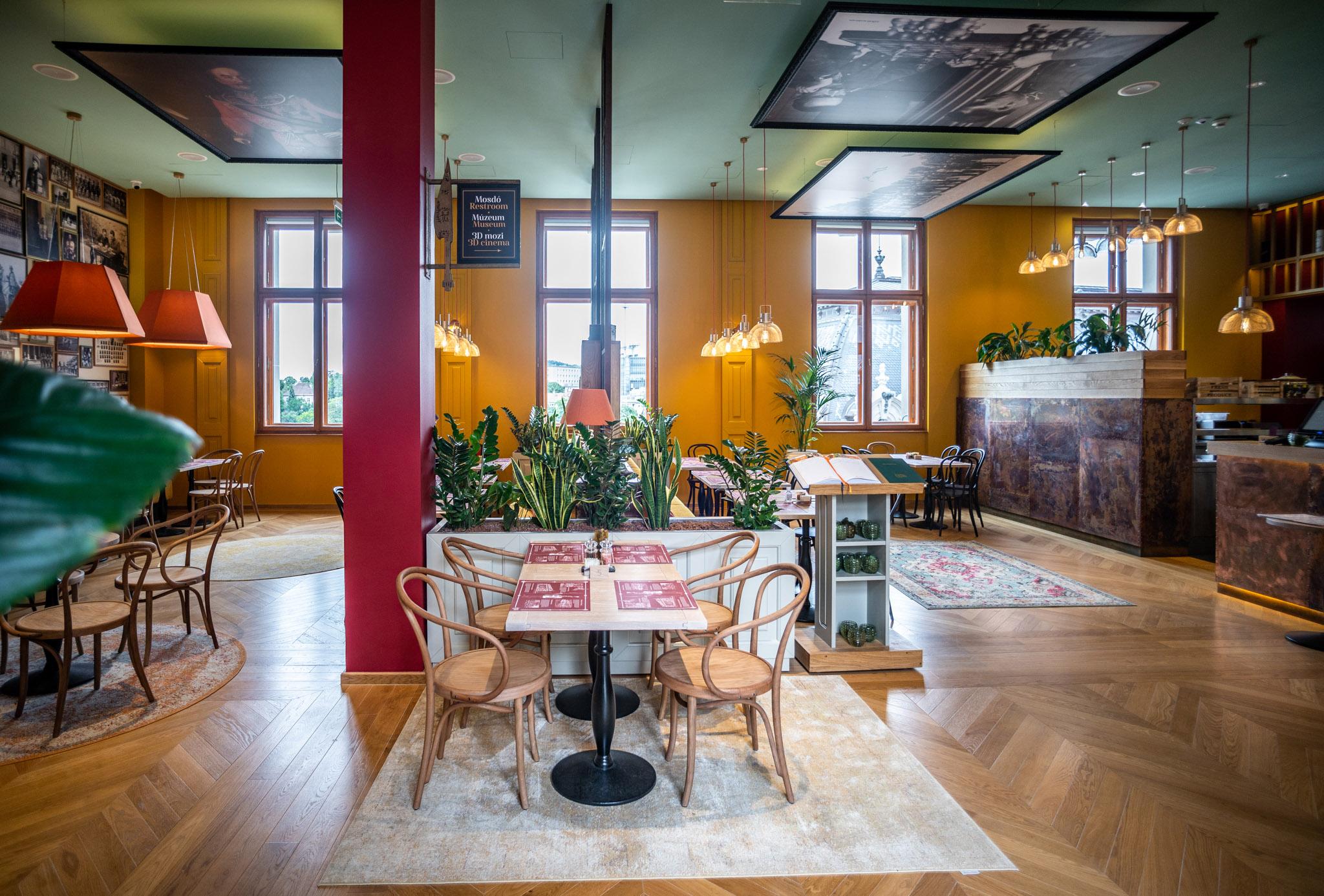 The colours of the uniform of the Hungarian Royal Guard return in the colours of the interior (Photo: Balázs Both/pestbuda.hu)
The colours of the uniform of the Hungarian Royal Guard return in the colours of the interior (Photo: Balázs Both/pestbuda.hu)
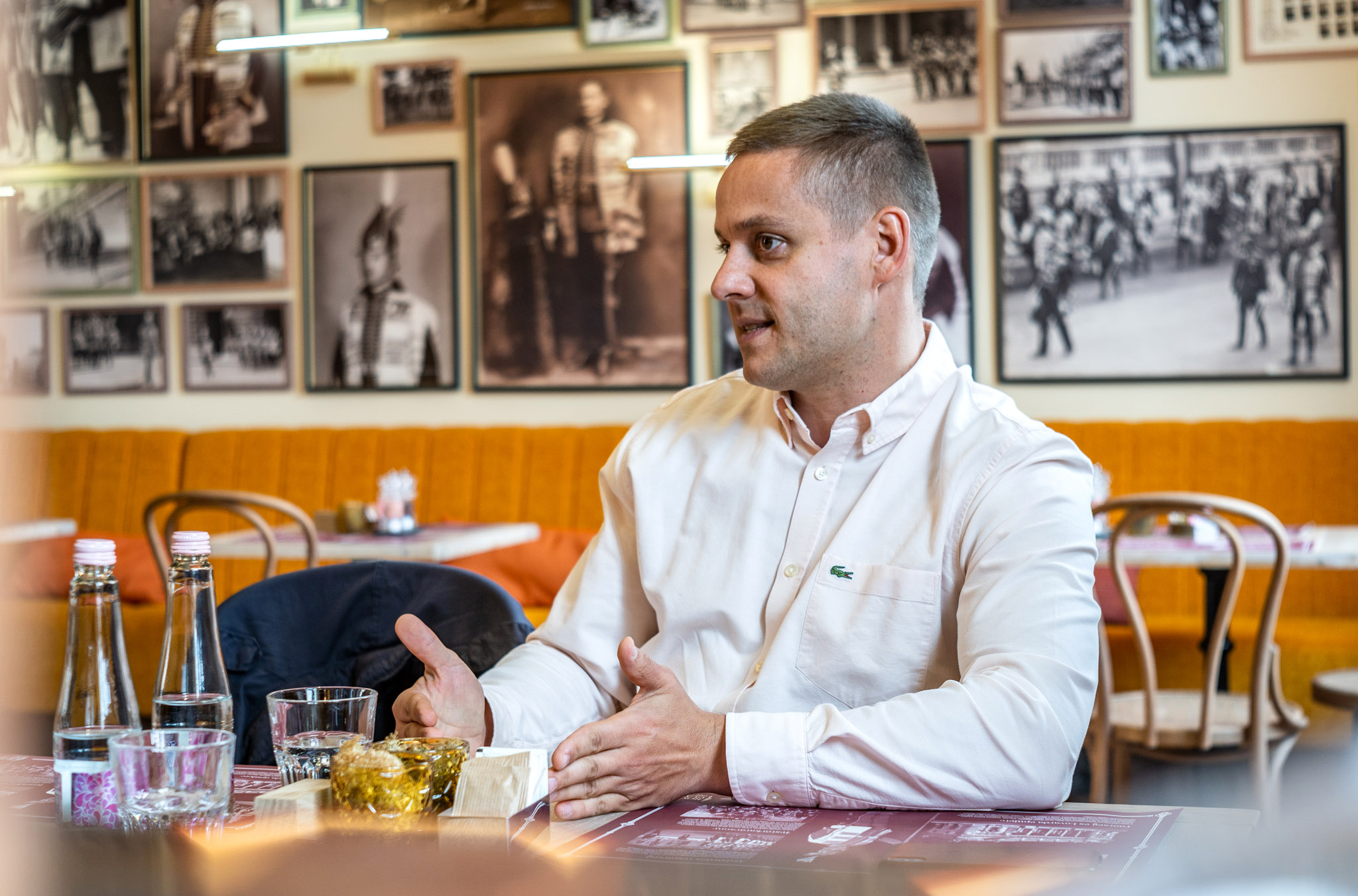
István Bottyán, managing director of the café in the Guard House (Photo: Balázs Both/pestbuda.hu)
As the director of the café, István Bottyán, told Pestbuda, the colours of the walls show the colours of the uniform of the Hungarian Royal Guard, which once served in the Buda Palace: red refers to the colour of the short fur-lined coat and dolman, and the golden-yellow fabric covering the soft benches refers to the colour of the riding boots and the footwear called deli shoes. The whole building is a kind of symbol: the pictures on the walls bring to life the guard serving in the Buda Castle and next to the Hungarian rulers and its military "predecessor", the centuries-old hussar traditions. One of the large photos secured on the ceiling of the café shows, for example, a wedding couple - György Piller and his new wife. That was the last day as a guard for the two-time Olympic champion fencer Piller because - said István Bottyán - he married below the rank in 1936, so he had to leave the board due to the strict rules already mentioned above.
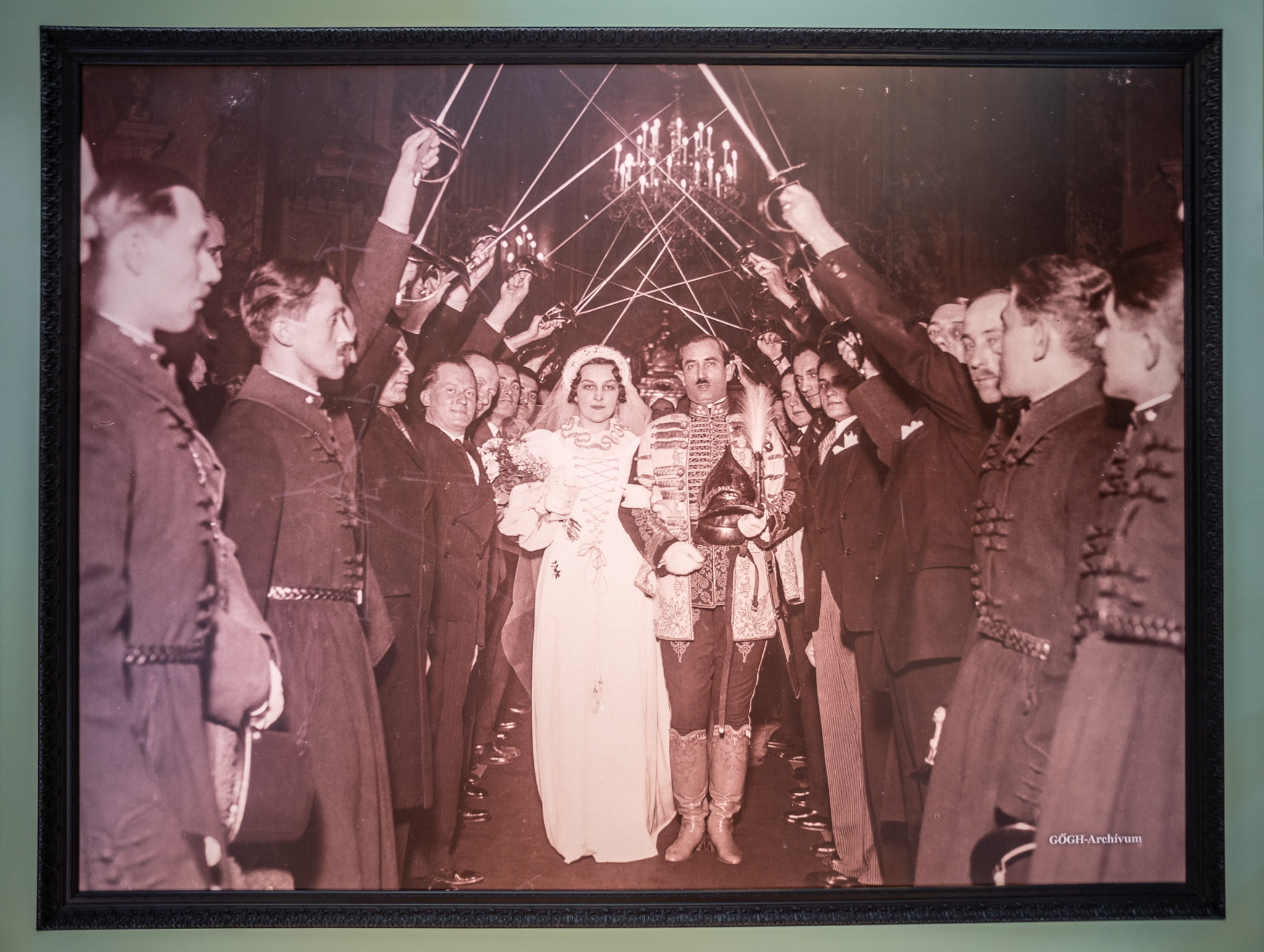
One of the pictures on the ceiling shows the 1936 wedding of two-time Olympic champion fencer György Piller. That was Piller's last day as a guard (Photo: Balázs Both/pestbuda.hu)
The myriad pictures covering the walls of the café could certainly tell hundreds of similar stories, which is why one can miss the captions. However, István Bottyán reveals after Pestbuda's suggestion: they welcome all constructive criticism and plan to write introductory texts for some photos, but the purpose of the photos is not to give accurate information about everything but to create a sense of amazement and start a dialogue about these glorious formations. The goal is for the incoming guest to start taking an interest in the topic.
Although noble guards once formed one of the highest prestigious strata of Hungarian society, they were simply not talked about for a long time after World War II. However, a few years ago, the organisation of the hussar unit of the Hungarian Defence Forces started, which together with the equestrian unit of the Rapid Response and Special Police Services and the member organisations of the Hungarian Hussar and Military Heritage Federation, proudly undertook the resumed service in Buda Castle.
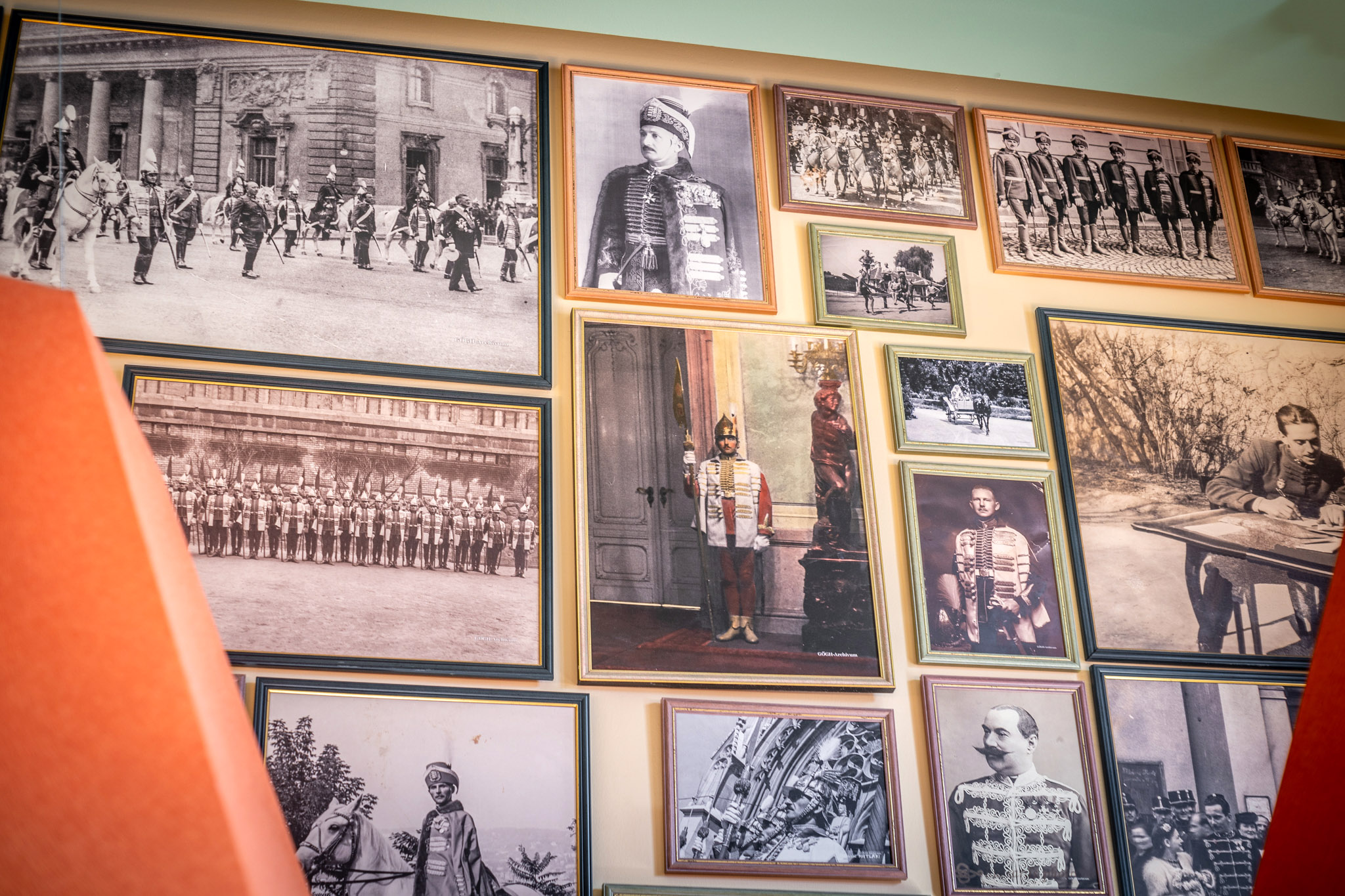
Guards in front of the original Guard House, a guardsman can be seen in the middle of the colour picture (Photo: Balázs Both/pestbuda.hu)
"If the most Hungarian troop is the hussar, the most Hungarian form of catering is a café," said István Bottyán on how these two things are connected in the Guard House. According to the managing director, a traditionalist hussar lieutenant, an important aspect in developing the concept was creating a high-quality café in the Guard House worthy of the sophisticated building and its surroundings. Therefore, together with experts in the history of the Hungarian guards, Péter Monostori and Gábor Gőgh, the concept of the café and the exhibition above it were developed.
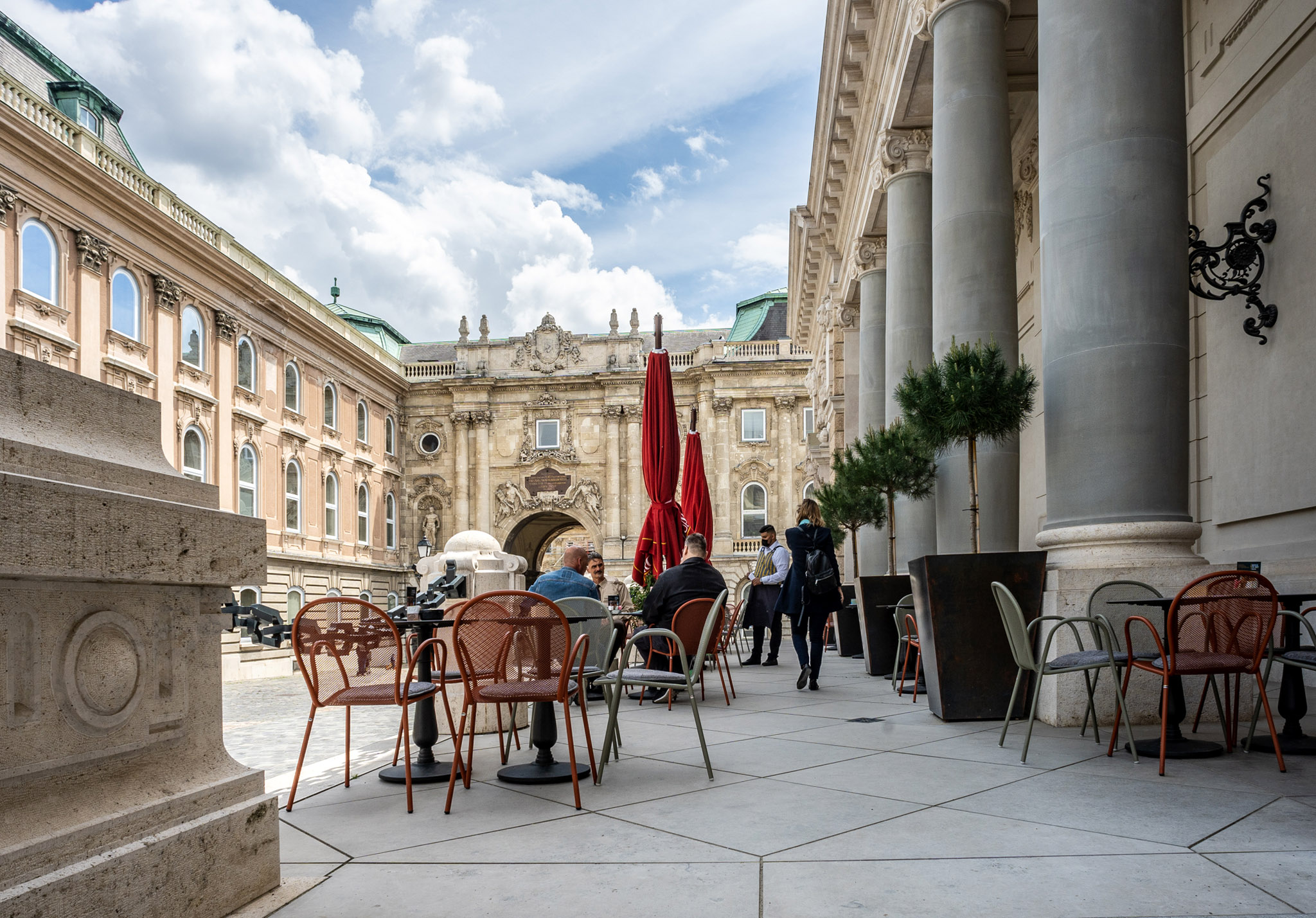
The terrace of the Guard House, the Hunyadi courtyard of the Buda Castle in the background (Photo: Balázs Both/pestbuda.hu)
When asked why the café was named the English Royal Guard Café, István Bottyán said that the name of the building was of course "Főőrség" (Guard House), but it would be very difficult for foreigners to explain this almost untranslatable Hungarian word, so they decided on the English "royal guard" term, as this includes the essence of the function. The choice of language is the result of a kind of parallel: just as Latin and German were the former bridge language (lingua franca) of the Austro-Hungarian Monarchy, nowadays, the same role is played by English.
The café, which is currently in trial operation, open from Friday to Sunday, from 11 am to 6 pm, already has 200-250 guests a day, and the food supply will gradually expand as the pandemic situation eases and the number of guests increases. The offers will follow the classic café menu: there will be main dishes in addition to the freshly prepared cakes on site. In addition to the extremely tasty selection of wild salami and wild ham, Pestbuda editors have tasted before, the house's speciality will be a knuckle of ham named M69, which will be served on a skewer modelled after an 1869 officer sword.
István Bottyán added that the quality required by the spirit of the place was taken care of when selecting the staff (chef, barista, and waiters), and Pestbuda's experience did not refute this: espresso coffee was exactly what it should be, the biscuit offered with it is sufficiently crumbly and not overly sweet, and the cheesecake with cranberry sauce is so tasty that anyone would surely come back for it.
.jpg)
An exhibition presenting the history of the noble guards took place in the upstairs (Photo: Balázs Both/pestbuda.hu)
The staff is also happy to tell the guests about the photos decorating the café, and more and more people visit them - as István Bottyán said - who are connected to the former guards through their family and ancestors. According to the managing director, the Guard House, which is a kind of symbol of this tradition, also revives literary culture through military, equestrian and guard writers related to the royal guard, such as György Bessenyei, one of whose descendants, Balázs Bessenyey, visited the director to tell his family story at the invitation he read in the Várkerti Séták.
.jpg)
The original uniforms and weapons are still impressive today (Photo: Balázs Both/pestbuda.hu)
Anyone can gain an insight into the past of the Hungarian Royal Guards on the floor of the Guard House, in a surprisingly spacious space following the roof plane of the building: among the original uniforms, weapons, diplomas, documents, and plenty of paintings copied from the original, the descriptions that will be completed soon will also help the visitors navigate. Looking at the uniforms on display, it is easy to feel the pride and the responsibility of wearing the uniform. Patriotism, loyalty, and a sense of duty are all values, István Bottyán added, which were essential for the patrols serving in the Buda Castle.
That is why it is important, the director explained, that the Defence Forces reorganise the hussar unit. Although hussars are part of the culture and folk tradition, their customs have been preserved for decades only by traditionalist organisations and then by the equestrian unit of the Rapid Response and Special Police Services, not by the official equestrian unit of the Defence Forces.
The reborn Guard House is also a special place because it integrates and displays the history of the guards that once served in the Buda Castle in a civilian way that is understandable to all visitors. After watching the popular old-new tradition, the changing of the guard, in the company of a coffee, soft drink and cake, everyone can get to know the people who once had the noblest task of protecting the Holy Crown, the current ruler, and the Royal Palace of Buda.
Cover photo: The building of the Guard House from the Hunyadi courtyard (Photo: Balázs Both/pestbuda.hu)

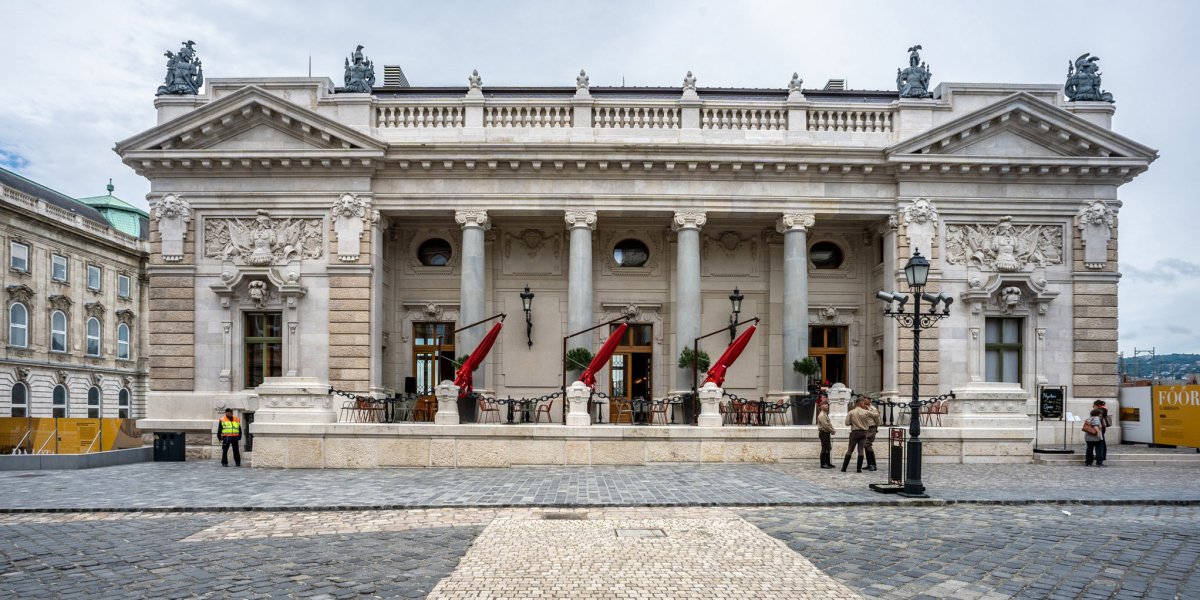



































Hozzászólások
Log in or register to comment!
Login Registration